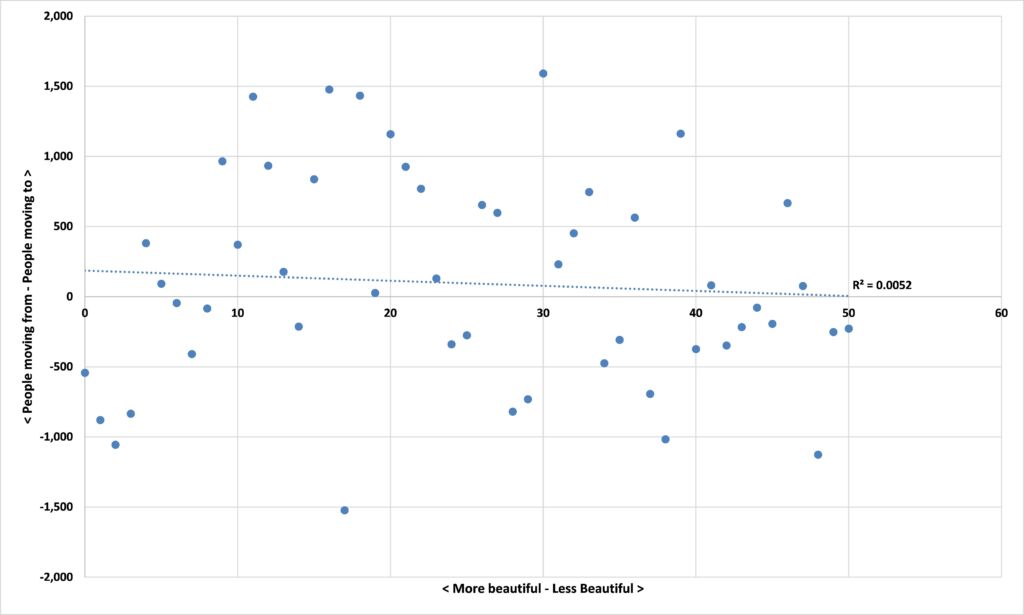Data show that people aren’t fleeing Minnesota for Florida for the scenery
Whenever I point out that Minnesota is losing residents, on net, to places like Florida, someone always offers an explanation for this fact the point of which is to exonerate the respective state government policies. “People aren’t fleeing Minnesota for Florida because the economy is doing much better in Ron DeSantis’ state than in Tim Walz’,” it is argued, “those people are actually moving because of X.”
X can be all manner of things. Recently, noting the migration patterns, one respondent said: “Not surprising people move to sunny, beautiful areas, for sure.” Happily, a new ranking of the 50 states from Thrillist allows us to test this hypothesis against the data.
We will take as our response variable the net domestic migration rate for each state for 2022. We derive this by dividing the net domestic migration number of each state for 2022 by the population, both taken from the Census Bureau, and multiplying the result by 100,000. On this measure, South Carolina actually comes top with a positive rate of 1,590.7 migrants per 100,000 residents while New York ranks dead last with a negative rate of 1,522.4. Minnesota ranks 14th from the bottom, with a negative rate of 339.3.
Our explanatory variable is Thrillist’s ‘All 50 States, Ranked by Their Beauty’. A quick glance suggests that our hypothesis might be in trouble: California ranks as the most beautiful state yet it also saw 343,230 people pick up sticks and head off for other parts of the United States in 2022 – its net domestic migration rate ranks 47, just fourth from bottom. The second most beautiful state is Hawaii, but here again we see a net domestic migration rate ranked 49th, just two from the bottom.
As Figure 1 shows, the hypothesis fares little better as you look down the rankings. Contra to our respondent’s hypothesis, there is, in fact, little apparent relationship between the beauty of a state and its net domestic migration rate.
Figure 1: Relationship between beauty of a state and its net domestic migration rate

The more statistically literate among you might be interested to note that a regression of these two variables finds a p-value of 0.62 which is greater than 0.05, telling us that there is no statistically significant association between these two variables. People aren’t moving from less beautiful states to more beautiful ones. Our respondent’s hypothesis can be rejected.
This finding contrasts with that of the relationship between state taxes and migration patterns. As I’ve noted before, a recent paper by economists Henrik Kleven, Camille Landais,
Mathilde Muñoz, and Stefanie Stantcheva that “review[ed] what we know about mobility responses to personal taxation” found that:
There is growing evidence that taxes can affect the geographic location of people both
within and across countries. This migration channel creates another efficiency cost of taxation with which policymakers need to contend when setting tax policy.
The evidence isn’t there that a state’s beauty drives migration patterns. It is there for the impact of taxes.